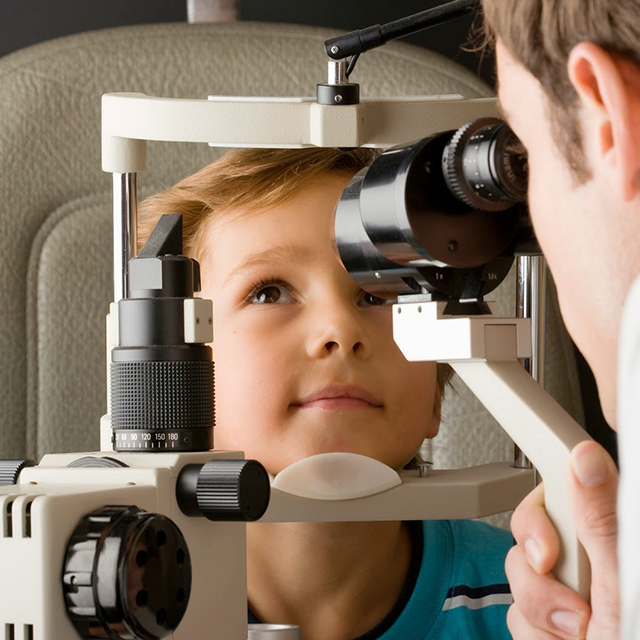Services
Children Eye Examinations

Children Eye Examinations
As a parent, you may wonder whether your preschooler has a vision problem or when you should schedule your child's first eye exam.
Eye exams for children are extremely important, because 5 to 10 percent of preschoolers and 25 percent of school-aged children have vision problems. Early identification of a child's vision problem can be crucial because children often are more responsive to treatment when problems are diagnosed early.
- First Exam
- Preschool Exam
- School-Age Child
- Signs & Symptoms For All Children
It is recommended that babies have their eyes examined by an eye doctor at 6 months of age. At this age the doctor will check to see if there are any diseases such as congenital cataracts or glaucoma, and will also determine whether nearsightedness, farsightedness, or astigmatism is present. Although a baby can't provide any "subjective" input, various tests can still be done to provide information on the visual status, including refractive error, eye alignment, eye coordination, and health.
New Patients
For patients that are new to our office, the following form is required to be completed. This form is available in our office, but for your convenience you may print, fill out, and bring this form with you to your first visit.
It is very important for children to have an eye exam before starting school. Vision screenings conducted through schools are NOT complete eye exams. A comprehensive exam includes the testing and evaluation of depth perception, colour vision, eye alignment and motility, focusing, and ocular health. A refractive test is also done to determine whether a child needs glasses for up-close or far distances.
In the school-age, reading, and therefore focusing, becomes more important. Because of this increased demand for near-work, children may experience eye strain or blur when attempting to read for prolonged periods. Distance vision is also important, as most classrooms require reading from a blackboard at the front of the class. Whatever the condition, it is important to have yearly eye exams to test for any changes in eyesight (change in glasses) as the child continues to grow. The eye doctor will also check the health of the eyes to ensure there are no systemic conditions (e.g. diabetes).
The following require immediate attention from a physician:
- A white pupil
- Sudden swelling or drooping of an eyelid
- Tearing, redness, or discharge that lasts for a number of days
- An eye turn (strabismus)
- One pupil appears larger than the other
Parents should also be attuned to signs of potential visual problems that children aged 2 to 6 may exhibit such as squinting or rubbing eyes excessively, covering one eye, tilting their head, headaches, not wanting to read, poor hand-eye coordination, or being unable to read the board at school.